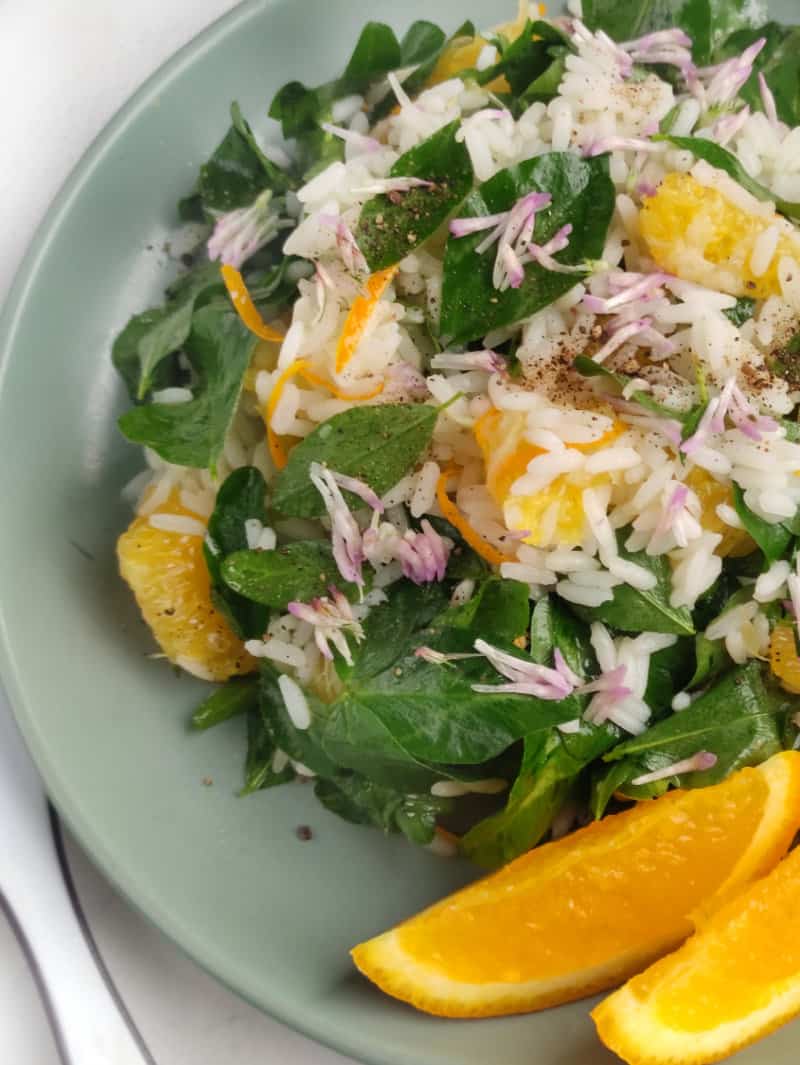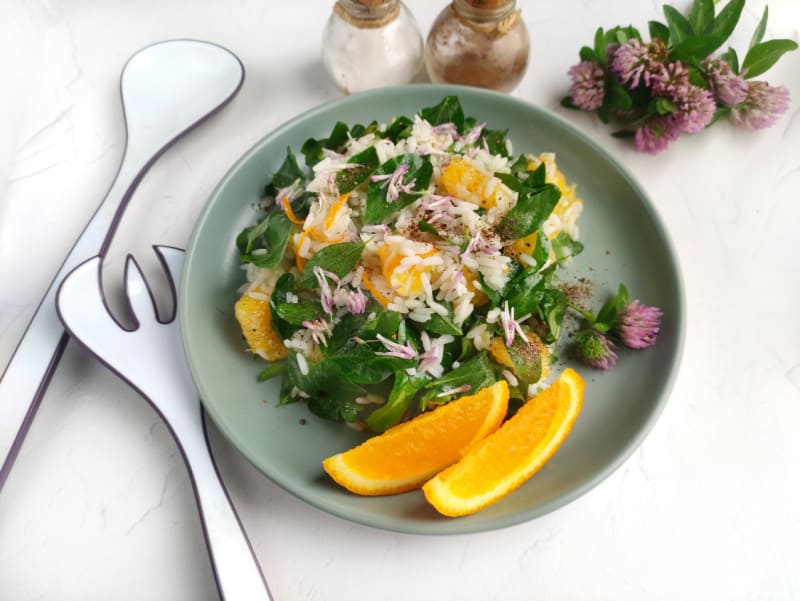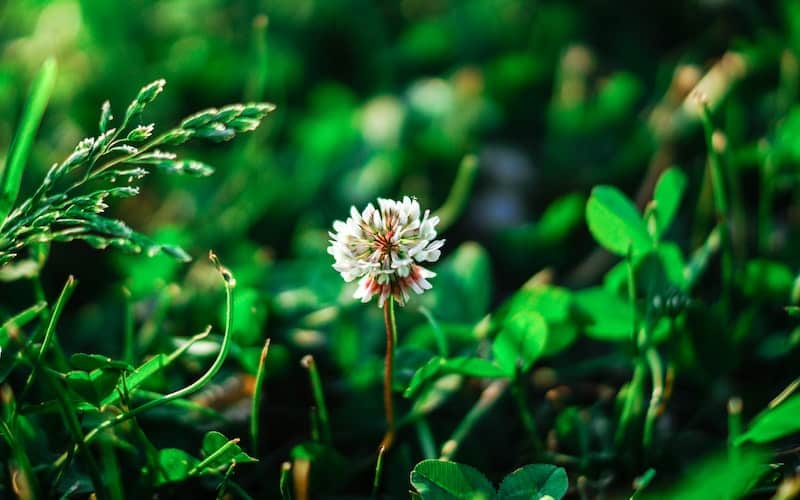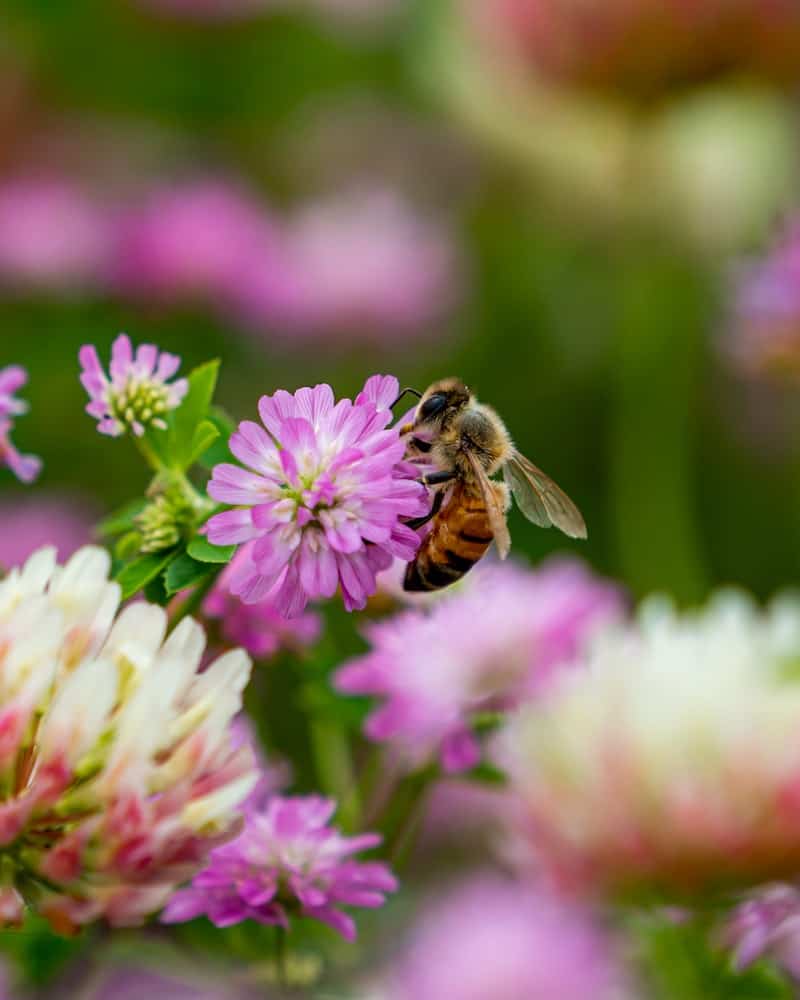Last Updated on July 29, 2023 by Ellen Christian
Is clover edible? Find out more about the uses of clover and which types you can eat. Try this easy Red Clover Salad Recipe you can make by foraging.
Posts may be sponsored. This post contains affiliate links, which means I will make a commission at no extra cost to you should you click through and make a purchase. As an Amazon Associate I earn from qualifying purchases.
Red Clover Salad Recipe
There are many edible wild plants you can probably find in your backyard. Just a few of them are dandelions, ramps, red clover, lilacs, and wood sorrel.
When you begin foraging, make sure that you stick to plants you can confidently identify. You can refer to a foraging book for more details. I recommend this one.
It’s important to only eat edible plants and wild foods that you know are safe. The clover leaves make the red clover flower and white clover flower easy to identify. All varieties of edible clover are members of the pea family.
They can be eaten raw in a variety of different ways. Try them when you have your next salad.
What do red clover flowers look like?
Red clover (trifolium pratense) is a flowering plant with three-lobed leaves and a small head of pinky-purple flowers. Red clovers may look dark pink or purple to you. But, it is red clover.
It’s edible and often used as an herbal tea. This Red Clover Salad Recipe will give you an idea of how to use it in the kitchen!
What do red clover leaflets look like?
Red clover leaflets are small and distinctively shaped, often resembling the shape of a heart or an egg. They are usually grouped in clusters of three on the stem and have a white or light green chevron on the upper surface that assists in guiding pollinators to the flower.
The leaflets are smooth, with a faint hint of a toothed edge, and a semi-glossy appearance. They are an excellent visual indicator when identifying wild plants.
Can you eat red clover blossoms?
Yes, you can eat red clover blossoms. The blossoms are not only edible but they are also quite nutritious. They are rich in many nutrients like vitamin C, calcium, and magnesium. While younger blossoms tend to be more tender and palatable, even mature blossoms can be eaten.
You can use red and white clover in salads, teas, or as garnish in a variety of dishes. However, as with any foraged food, make sure they are thoroughly cleaned before eating.
Can you eat white clover?
So, can you eat clover? Yes, white clover (trifolium repens) is indeed edible. Much like its red counterpart, white clover flowers can be used in a variety of culinary applications. Its leaves and flowers can be eaten fresh in salads or used as a garnish, while the dried flowers can be used to make a refreshing tea.
However, always ensure that the clover has not been treated with pesticides or other harmful chemicals before consuming.
Can you eat leaves of the clover plant?
Yes, you can eat the leaves of the clover plant. Both red and white clover leaves are edible and can be enjoyed fresh in salads, or cooked in dishes much like spinach. They are packed with nutrients and have a mild, sweet flavor that complements a variety of foods.
However, as with all foraged foods, it’s crucial to ensure pesticides haven’t bee sprayed on the flowers.
This product presentation was made with AAWP plugin.
What is sweet clover?
Sweet clover is a type of clover that is known for its sweet-smelling, yellow or white flowers. It’s technically a biennial plant, which means it flowers and sets seed in its second year. You can find it in fields, pastures, and along roadsides.
Clover is not only attractive but also edible, like its white and red counterparts. You can use the leaves in salads. And you can steep the flowers to make a fragrant tea.
However, as with any foraged plant, be sure to confirm its identity before eating, and ensure it hasn’t been exposed to pesticides or other harmful chemicals.
Where can I find red clover flower?
You can find red clover blossoms in a variety of settings, such as pastures, meadows, and along roadsides. They are well-suited to both full sun and partial shade environments.
They are particularly common in the temperate regions of Northern Europe, Asia, and Africa, but they have also been introduced to North America.
It’s important to remember when eating wild flowers, always ensure the plants have not been treated with any chemicals or pesticides. Stay away from roadsides to avoid contamination from vehicle emissions.
Uses of clover flowers
Clover flowers have a multitude of uses, both culinary and medicinal, thanks to their rich nutrient content and sweet, mild flavor.
- Salads: You can use clover flowers fresh in salads, adding a vibrant color and a mild, sweet taste.
- Teas: Dry red and white clover flowers and make a refreshing herbal tea.
- Syrup: You can use the flowers to make a sweet, floral syrup, perfect for drizzling over pancakes or adding to cocktails.
- Jelly: The sweet taste of clover flowers makes them perfect for turning into a flavorful jelly.
- Garnishes: You can use clover flowers as a beautiful, edible garnish on a variety of dishes.
- Wine: You can use clover flowers to make a light, sweet wine.
- Medicinal Uses: Clover flowers are rich in isoflavones, which are thought to have a variety of health benefits including heart health and bone health.
- Forage for Livestock: Clover flowers are a nutrient-rich forage option for livestock, including cows and sheep.
- Baked Goods: Add clover flowers to baked good and bread for a touch of sweetness and color.
- Skin Care: You can use clover flowers in skin care products for their purported anti-aging and skin-soothing properties.
Tips for picking white and red clover
- Identify correctly: Always ensure you’ve correctly identified the clover before picking. Misidentification can lead to picking a poisonous plant.
- Avoid polluted areas: Do not pick clovers from the side of busy roads or industrial areas, as they may be contaminated by vehicle emissions or industrial pollutants.
- No pesticides: Do not pick clovers from lawns or fields that have been treated with pesticides or herbicides.
- Choose young clovers: Young clovers are more tender and flavorful. Pick them at the bud stage or just as they’re beginning to open.
- Morning harvest: Harvest clover in the morning after the dew has dried, this is when they are at their freshest.
- Weather conditions: Avoid picking clovers immediately after a heavy rain, as they can be water-logged and less flavorful.
- Respect nature: Do not overharvest from a single area; ensure you leave enough plants to regenerate and provide food for wildlife.
- Check for insects: Always check the clovers before you pick them, as they can often be a habitat for insects.
- Proper storage: After picking, store the clovers in a cool and dry place to maintain their freshness.
- Clean thoroughly: Always wash the clovers thoroughly under running water before consumption to remove any dirt or small insects.
No products found.
Red clover salad ingredients (2 servings)
1 bundle of red clover
2 sprigs of mint
1 orange
1/3 cup rice
2 tablespoons olive oil
salt, pepper
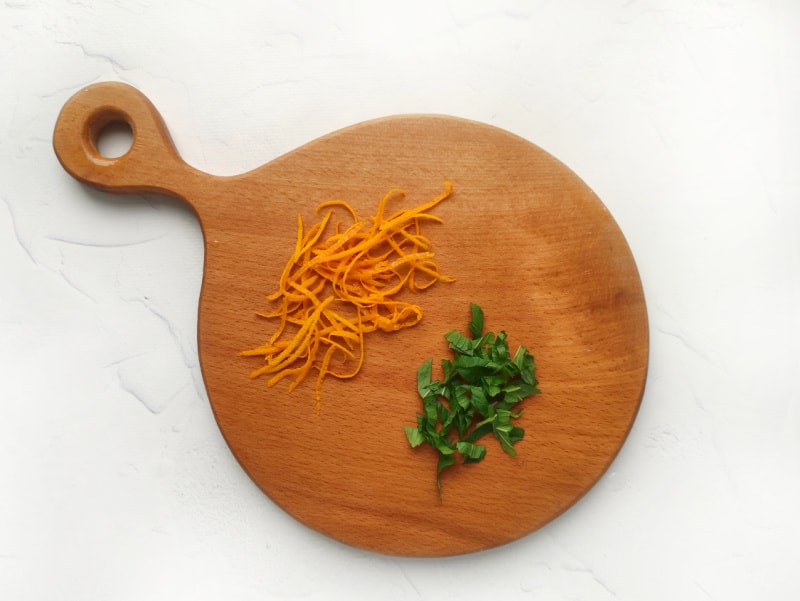
How to make clover salad
1. Wash the orange, remove the zest from 1/4 of the fruit. Remove the stems of the mint, cut the leaves thinly.
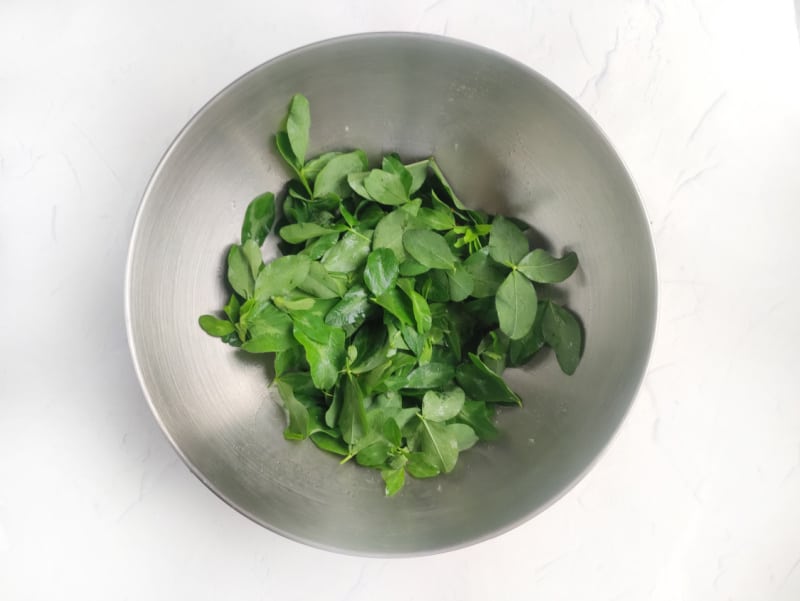
2. Soak red clover briefly in a bowl of cold water. Drain the sprigs. Tear off the leaves and put them in a bowl to mix the salad. Do not salt.
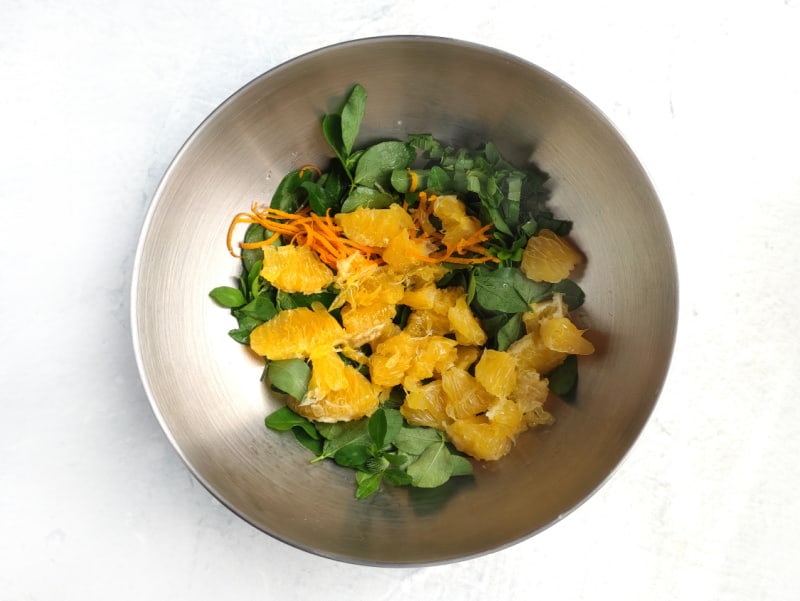
3.Peel the orange slices from the foil and cut into large pieces. Place the orange slices in a bowl. Add the mint and zest.
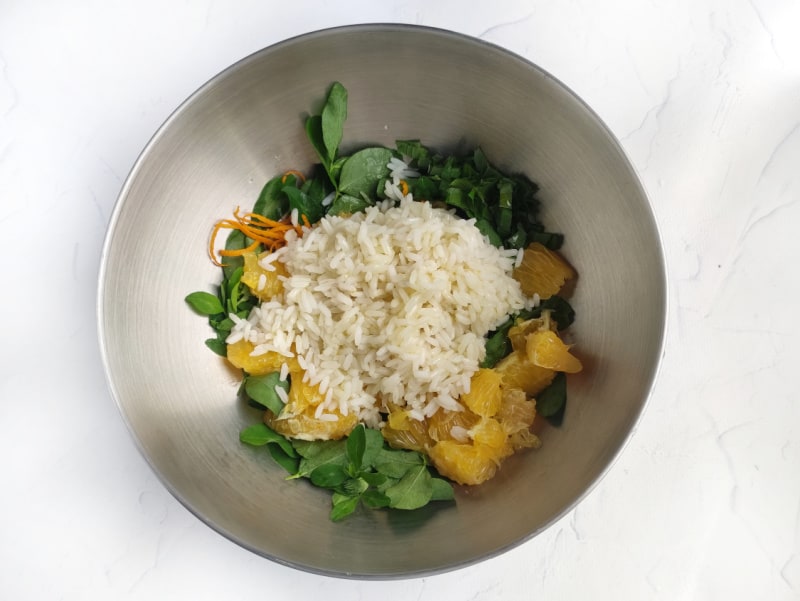
4 Boil the rice in salted water and rinse in cold water. Place the rice, add the olive oil to the bowl. Stir in the salad.
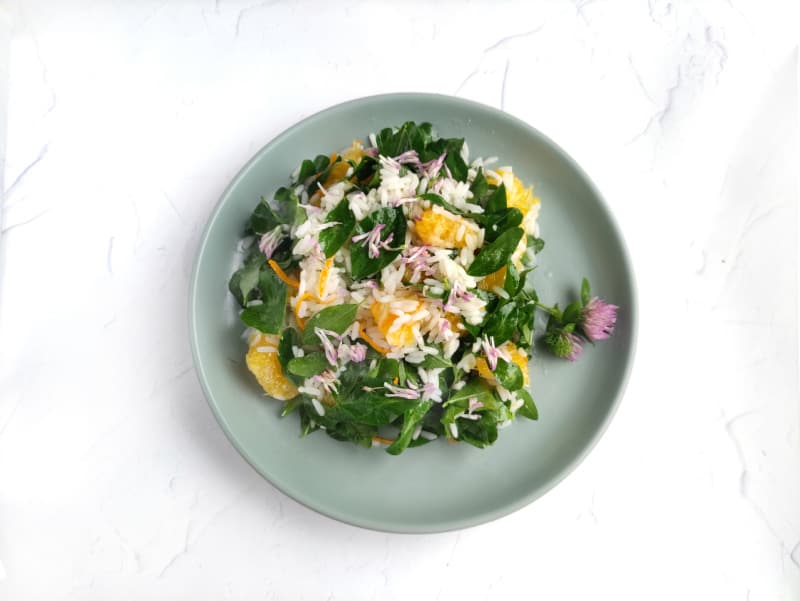
5. Place the salad on a serving plate. Divide the clover flowers into florets and sprinkle the salad on top. Garnish the dish with the clover, orange slices. sprinkle with pepper.
Optional add ins
As an option you can sprinkle the salad with seeds, nuts, flax seeds. I enjoy pistachios, sunflower seeds, and pumpkin seeds. Or, you might want to add croutons.
What to serve with clover salad
So, you may want to try these:
Related Reading
Finally, you may also enjoy these articles:
How to choose the best edible flowers
Wild foraging and preparedness
Red Clover Salad Recipe
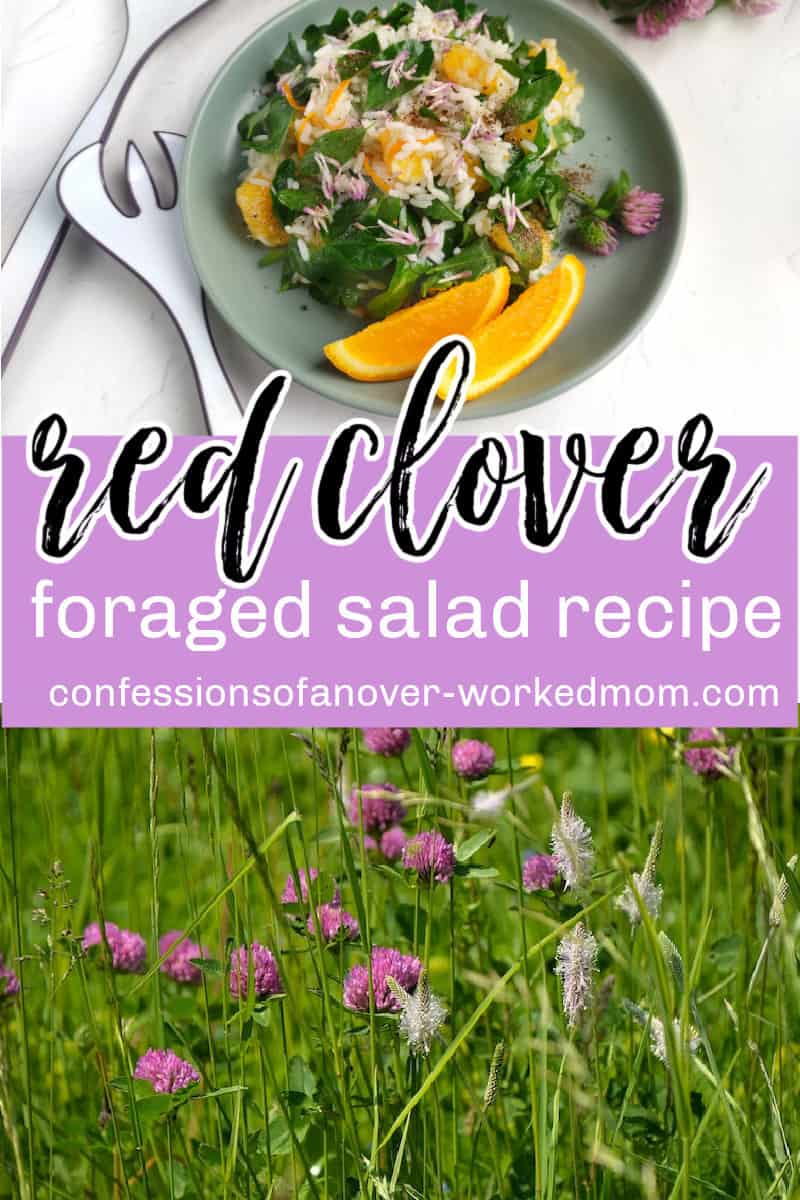
Is clover edible? Find out more about the uses of clover and which types you can eat. Try this easy Red Clover Salad Recipe you can make by foraging.
Ingredients
- 1 bundle of red clover
- 2 sprigs of mint
- 1 orange
- 1/3 cup rice
- 2 tablespoons olive oil
- salt, pepper
Instructions
- Wash the orange, remove the zest from 1/4 of the fruit. Remove the stems of the mint, cut the leaves thinly.
- Soak red clover briefly in a bowl of cold water. Drain the sprigs. Tear off the leaves and put them in a bowl to mix the salad. Do not salt.
- Peel the orange slices from the foil and cut into large pieces. Place the orange slices in a bowl. Add the mint and zest.
- Boil the rice in salted water and rinse in cold water. Place the rice, add the olive oil to the bowl. Stir in the salad.
- Place the salad on a serving plate. Divide the clover flowers into florets and sprinkle the salad on top. Garnish the dish with the clover, orange slices. sprinkle with pepper.
Nutrition Information:
Yield:
2Serving Size:
1Amount Per Serving: Calories: 198Total Fat: 14gSaturated Fat: 2gTrans Fat: 0gUnsaturated Fat: 11gCholesterol: 0mgSodium: 293mgCarbohydrates: 19gFiber: 2gSugar: 7gProtein: 1g

Ellen is a busy mom of a 24-year-old son and 29-year-old daughter. She owns six blogs and is addicted to social media. She believes that it doesn’t have to be difficult to lead a healthy life. She shares simple healthy living tips to show busy women how to lead fulfilling lives. If you’d like to work together, email info@confessionsofanover-workedmom.com to chat.

